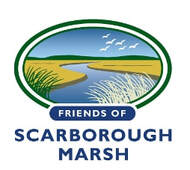A three-year project to control the invasive reed Phragmites australis in the Scarborough Marsh has achieved its goal of a 95% eradication rate in the areas treated under the program. The project was a collaboration among the Maine Department of Inland Fisheries & Wildlife, the Friends of Scarborough Marsh, U.S. Fish & Wildlife Service Gulf of Maine Program, USDA Natural Resource Conservation Service, Ducks Unlimited, and Maine Audubon. Launched in August 2010, it involved a variety of actions utilizing highly specialized mowing equipment, licensed and trained contractors and application of a specially formulated herbicide that affects only plants.
Phragmites is a perennial and aggressive wetland grass that grows over 10 feet tall and is easily recognized by its height and fluffy seed heads. Their thick growth and rapid spread choke out valuable plants and reduce the biodiversity of the marsh's delicate ecosystem. This type of Phragmites is not native to this area, and it has significantly compromised wetlands up and down the east coast. The weeds aggressively spread and colonize new areas every year.
Despite advancements in phragmites abatement methods, we will never fully eliminate the plant. FOSM will continue to work with Maine IF&W and other partners to monitor remaining stands and coordinate further control efforts as available resources allow.
Phragmites is a perennial and aggressive wetland grass that grows over 10 feet tall and is easily recognized by its height and fluffy seed heads. Their thick growth and rapid spread choke out valuable plants and reduce the biodiversity of the marsh's delicate ecosystem. This type of Phragmites is not native to this area, and it has significantly compromised wetlands up and down the east coast. The weeds aggressively spread and colonize new areas every year.
Despite advancements in phragmites abatement methods, we will never fully eliminate the plant. FOSM will continue to work with Maine IF&W and other partners to monitor remaining stands and coordinate further control efforts as available resources allow.
 RSS Feed
RSS Feed
